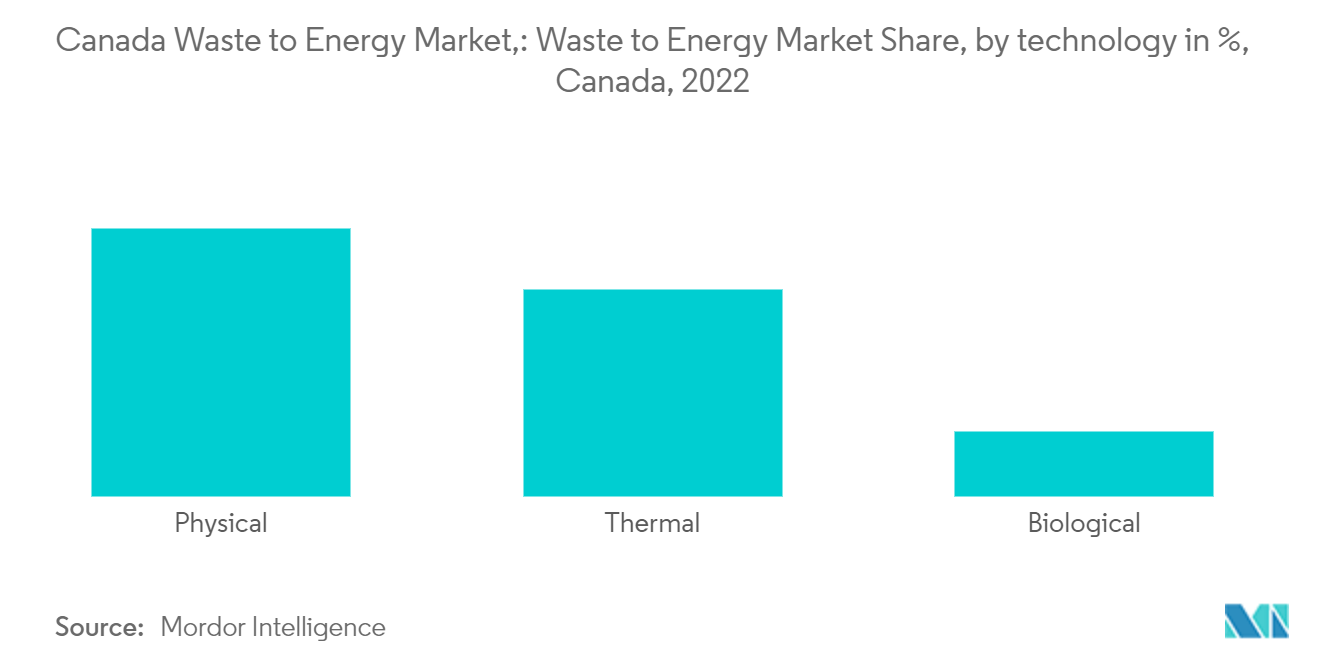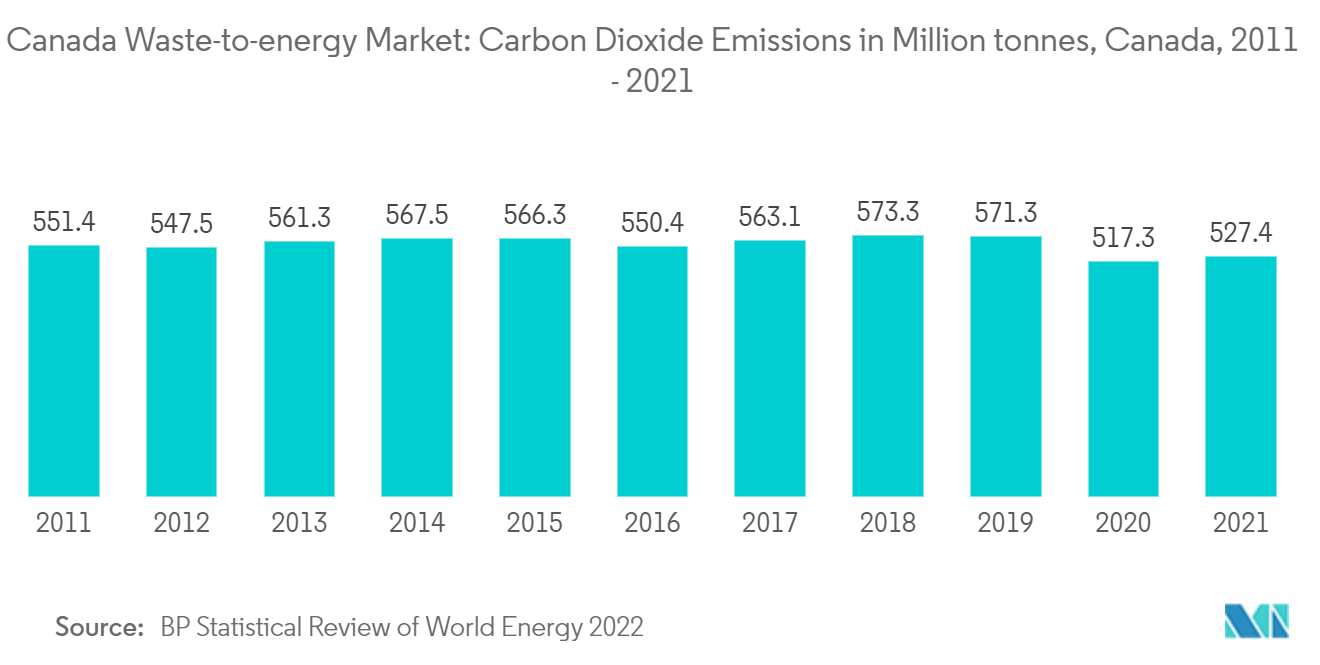Market Trends of Canada Waste-to-energy Industry
Thermal-based Waste to Energy Conversion May Have Increasing Adoption
The thermal process involves treating waste to produce heat, which is then utilized to manufacture fuel oil or syngas from both organic and inorganic wastes or to generate electricity. Additionally, the thermal process could entail plasma arc gasification, pyrolysis, thermal gasification, or combustion.
- The most well-known WtE technology for processing municipal solid waste (MSW) at the moment is incineration. Combustible synthetic gas (syngas) is created by the gasification and pyrolysis processes, which can then be further upgraded and refined for direct generation in a gas turbine or engine. Due to lower operating temperatures, lower steam pressure, and a higher overall energy requirement for plant operation, incineration often has a better electrical efficiency rate than gasification. It is estimated that plants that utilize cogeneration of thermal power (heating and cooling) together with electricity generation can reach optimum efficiencies of 80%.
- WTE technologies, particularly incineration, produce pollution and carry potential health and safety risks. The following air emissions are associated with incineration facilities: metals, organics, acid gases, particulates, nitrogen oxides, and carbon monoxide. These incinerators have been highly scrutinized by NGO activists, public health agencies, and the general public, which influenced the legislators to impose stricter limits on emissions.
- To reduce particulate and gas-phase emissions, incineration plant owners have adopted a series of process units to clean the flue gas stream, which has, in turn, led to a significant improvement in terms of environmental sustainability.
- Gasification of waste produces fewer emissions per unit of generated power compared to both incineration and landfilling. If focused on the number of pollutant emissions per unit of treated waste, gasification is the preferred option, while incineration is considered the most harmful.
- Thus, the wide availability of technology, combined with a change in technology, is expected to lead to the increasing adoption of thermal-based WTE technology during the forecast period.

The Recycling Rate of Waste in Canada Remains a Restraint
- In Canada, around 107.2 million tons of municipal solid waste (MSW) are produced annually. About 47 million tons of the MSW produced were recycled, and 16 million tons were composted.
- A total of 63 million tons of MSW were recycled and composted, or 35.8% of the waste was recycled and composted.
- The numerous limits on excessive carbon emissions imposed by the new government laws restrict the development of the incineration process.In recent years, the nation has seen an increase in its carbon emissions.
- The market for incineration is also anticipated to be impacted by the intention to boost recycling of municipal solid waste to 60% by 2035.
- Overall, the increasing technological advancements in the recycling sector, combined with favorable government policies, are expected to slow down the growth of Canada's waste-to-energy market during the forecast period.


